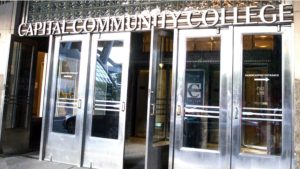A Capital History
— from 1974 Catalog, Greater Hartford Community College
 Capital Community College, one of 12 community colleges in Connecticut, is the result of the 1992 merger of Greater Hartford Community College (founded in 1967) and Hartford State Technical College (founded in 1946). Through the years Capital and its founding institutions have provided central Connecticut with postsecondary educational opportunities by granting associate degrees, preparing students to transfer to baccalaureate studies and offering workforce and career development programs.
Capital Community College, one of 12 community colleges in Connecticut, is the result of the 1992 merger of Greater Hartford Community College (founded in 1967) and Hartford State Technical College (founded in 1946). Through the years Capital and its founding institutions have provided central Connecticut with postsecondary educational opportunities by granting associate degrees, preparing students to transfer to baccalaureate studies and offering workforce and career development programs.
The Connecticut Engineering Institute opens in Hartford as a pilot project that would become Hartford State Technical College.
The Engineering Institute holds its first commencement
The school’s name is changed to Hartford State Technical Institute
Hartford State Technical Institute opens a new campus at 401 Flatbush Avenue
Greater Hartford Community College is founded and enrolls 339 students at classroom facilities in the city’s historic South Meadows. Arthur C. Banks, Jr. becomes its first president.
The State Technical Institute becomes Hartford State Technical College with Thomas V. Raimondi as its first president.
Greater Hartford Community College re-locates to the former Phoenix Insurance Company building at 61 Woodland Street in the city’s Asylum Hill neighborhood.
Capital Community-Technical College becomes Capital Community College.
The College moves to a consolidated campus at 950 Main Street.
The College confers 400 associate degrees and certificates — the largest class in history — marking four years of enrollment growth at the downtown campus.
Capital traces its roots to the Connecticut Engineering Institute which enrolled 22 students in mechanical and electrical engineering in its first year. In the years following World War II, the technical school educated a generation of engineering technicians for the region’s manufacturing, industrial and public works sectors. It graduated its first class of 23 students in June, 1948. In 1960, the institute left its Washington Street facility and moved to a new campus at Flatbush Avenue.
In 1967, Greater Hartford Community College opened with a freshman class of 388 students. First located at two-story brick building on Sequassen Street on the east edge of historic Colt Park, the college grew at the “temporary” campus for seven years. In September of 1974, Greater Hartford Community College moved into a six-story building at 61 Woodland Street. This former home of Phoenix Insurance Company enabled the College to grow to 2,446 students by the fall of 1974. For a brief time at the end of the 1980s, Greater Hartford Community College became part of the Capital Region Community College District, in affiliation with Asnuntuck Community College in Enfield and Tunxis Community College in Farmington.
Located only four miles apart, Hartford State and Greater Hartford finally merged their missions and resources in 1992 in a state mandated consolidation. The unified institution was named Capital Community-Technical College. In 2000, the college was re-named Capital Community College.
Capital has steadily expanded its educational offerings and professional programs amid rapid technological and workplace changes. From core liberal arts and business administration disciplines in the early years, the College’s programs of study now encompass more than 50 associate degree and certificate programs. Programs include nursing and allied health, computer information systems, social services and early childhood education. The College is one of New England’s most ethnically diverse campuses. Nearly 60 percent of students are African American and Latino.
At the end of 1999, the former G. Fox Department Store on Main Street was selected as the site for a new campus. The new campus, a key to downtown Hartford’s revitalization, included a $70 million top-to-bottom renovation of 300,000 square feet of space in the former retail building, a downtown landmark where generations of residents shopped and worked. The College occupies the original section of the 1918 building. High tech classrooms and labs, new instructional equipment and a state of the art telecommunications system are incorporated into the former department store where care has been taken to preserve some of the building’s historic features.
Downtown Hartford is now an extended campus for thousands of students of all ages. Capital, centrally located and more accessible to residents, continues to educate a multicultural community of learners in an urban center of business, culture and government.
